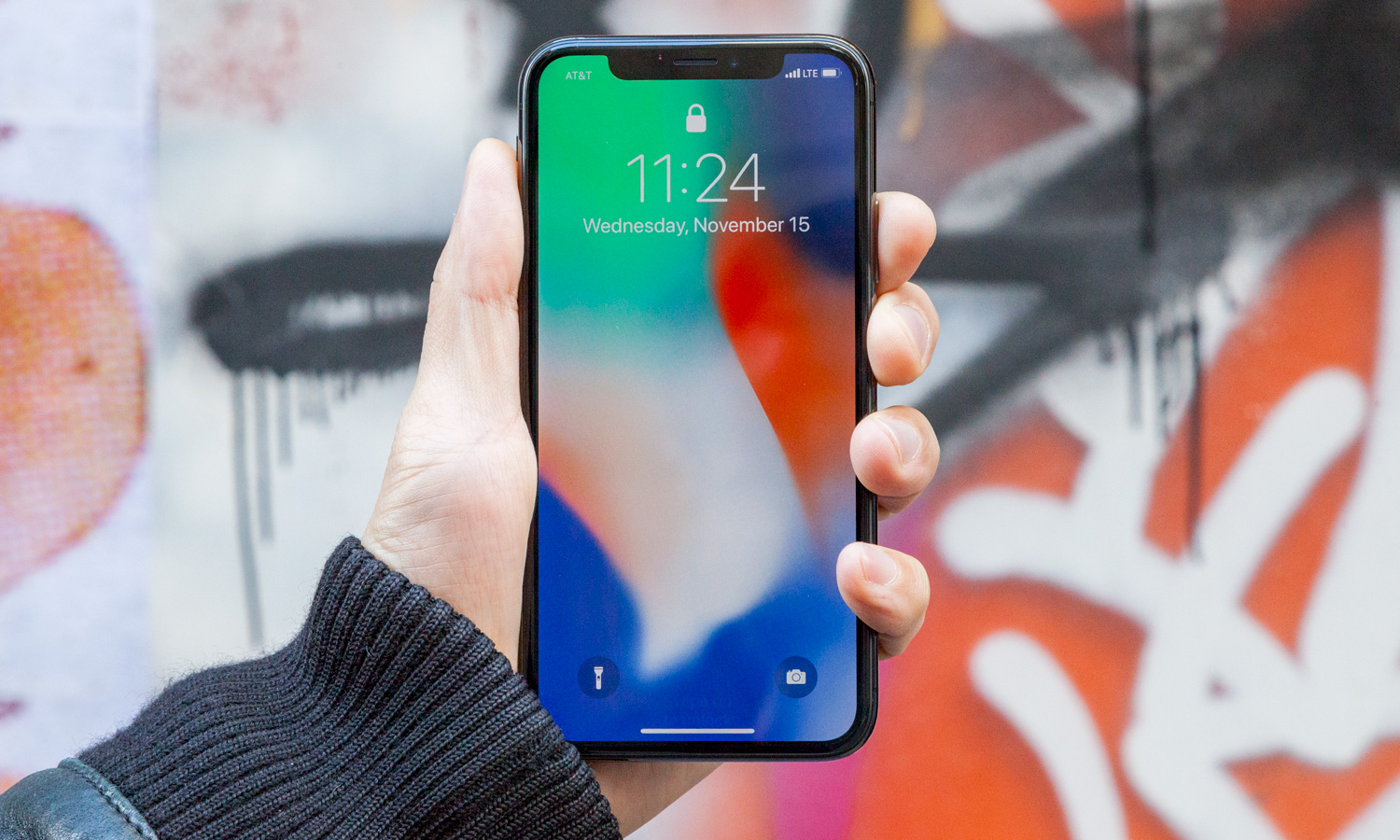iPhone in Trouble? Let's Really Look at the Numbers
Apple sold fewer iPhone during the holidays than it did the previous year, but made more money. Maybe the iPhone X wasn't such a disappointment after all.
May all your disappointments in life turn out to be like Apple's iPhone sales during the 2017 holiday quarter.

Apple sold fewer iPhones during those three months than it did during the same period in the previous year — 77.3 million versus 78.3 million a year ago. (Of course, as Apple took pains to point out, this year's holiday quarter was one week shorter than the one at the end of 2016.) That was below Wall Street expectations during a quarter in which Apple launched three new phones highlighted by the iPhone X.
But despite selling fewer iPhones, Apple brought in more revenue during its fiscal first-quarter. Phone revenue rose 13 percent year-over-year to a little less than $61.6 billion. Apple's total revenue of $88.3 billion was a record for the company, as was its quarterly profit.
Apple CEO Tim Cook told Wall Street analysts during a conference call today (Feb. 1) the iPhone X was the most popular model Apple sold during the quarter. "And that's particularly noteworthy given that we didn't ship until early November and were constrained for a while," he said. "Since launch of iPhone X, it has been the most popular iPhone every week... and that's true through to today."
So how did Apple turn flat phone sales into record revenue? The answer lies partly in the higher asking price the company charged for its new phones. According to chief financial officer Luca Maestri, average selling price on the iPhone was $796 during the just-completed quarter, up from $695 last year.
Avi Greengart, research director for consumer devices at GlobalData. notes that the new average selling price is more than what Apple was charging for its iPhone 7 Plus last year. "What used to be the pinnacle of Apple's product line is now the average selling price," he said.
"If we had questions about whether Apple’s customers would be willing to pay more for a device, we have our answer," agreed Jason Snell, a long-time Apple watcher who runs the Six Colors website (and contributes to Tom's Guide).
Apple's also benefiting from expanding its iPhone lineup. In addition to the three models introduced last fall, Apple continues to sell the iPhone 7 and 7 Plus, the iPhone SE and the iPhone 6s and 6s Plus at a range of different prices. "They're making more money by creating new levels of product for consumers looking for a differentiated, premium experience," Greengart said.
MORE: How to Use the iPhone X - A Guide to New (or Improved) Features
While the iPhone X may be the most popular model, but it's not the only one Apple's selling. Cook said in both the U.S. and urban China, the top five smartphones sold during the holiday quarter were all iPhones. In Japan and the UK, six of the top seven smartphones sold were iPhones.
"In a market that is as large as the smartphone market is, people want some level of choice and they're deciding which ones to buy," Cook added. "We feel fantastic, particularly as it pertains to iPhone X."
The company likely also strongly about its revenue from services, which include the App Store, Apple Music, Apple Pay and all those other Apple products we pay for even after buying our phones and tablets. Revenue from services rose 18 percent year over year to a little less than $8.5 billion.
"Now that I've spent more money on a device, I'm going back and spending even more money on services," Greengart said, describing how Apple's active installed base of 1.3 billion devices — another company record — is helping drive its growth.
It's possible that iPhone sales could cool off after the initial rush of early adopters, though Apple offered Wall Street some bullish guidance for its second quarter. Apple expects sales to fall between $60 and $62 billion for the quarter ending in March. If it hits that projection,that would be a 13 to 17 percent jump from its sales the previous year.
"I suspect that Apple will continue to sell new iPhones over time," Six Colors' Snell said. "Not everybody buys in the fall, and Apple’s proven that over time. The iPhone X gives Apple a starting point for variant designs, which we’ll probably see starting this fall. And a lot of people shied away from the iPhone X on the first go-around, which suggests there’s room to sell upgrades there."
Get instant access to breaking news, the hottest reviews, great deals and helpful tips.
Even with the increased sales, though, you get the sense that Apple might be planning on handling this year's fall iPhone updates a little differently than the 2017 rollout of new devices. The phrase "despite the iPhone X's staggered launch" came up several times during Apple's analyst briefing, suggesting that you won't see Apple release its new phones in stages this year.
Snell's not convinced that Apple is rethinking anything, given the numbers the company just posted. "In the end, Apple seems to have made it work," he said. "I’d imagine it will embolden them for 2018, if anything."
Big price jumps might be off the table, though. "I don't think we're going to see a $1,500 iPhone," GlobalData's Greengart joked. Instead, he sees Apple increasing the number of phones with thin bezels and features like Face ID, a projection in line with some of the rumors already circulating about this year's iPhone updates.
"Tim Cook has said the iPhone X is Apple's platform for the next decade," Greengart said. "Undoubtedly, they're going to build on that."
Philip Michaels is a Managing Editor at Tom's Guide. He's been covering personal technology since 1999 and was in the building when Steve Jobs showed off the iPhone for the first time. He's been evaluating smartphones since that first iPhone debuted in 2007, and he's been following phone carriers and smartphone plans since 2015. He has strong opinions about Apple, the Oakland Athletics, old movies and proper butchery techniques. Follow him at @PhilipMichaels.

